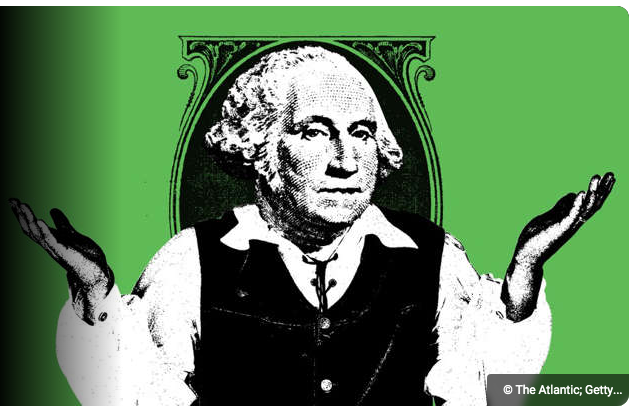
As somebody who’s paid to tell stories about the economy, I always find it satisfying to assemble data points to produce a compelling pointillist picture about the state of the world. But these are rough times for economic pointillism. The data are all over the place, and the big picture is a big mess.
I look at the stock market, where valuations have collapsed. Okay, so markets are trying to tell us that future growth will be slower. Then, I see that consumers expect persistent inflation over the next five years. A growth slowdown with sticky inflation? Unusual, but not unprecedented. Consumers are glum about economic conditions but optimistic about their own finances, and they’re spending money on services and leisure and travel as if they’re eager participants in a booming economy. So everything is terrible, but I’m doing fine? Okay, that’s psychologically rich. Nominal gas prices are at record highs, but unemployment is near multi-decade lows; mortgage interest rates are rising quickly, but they’re at historically normal levels. So, things are bad, but also good, but also crummy, and maybe fine?
Regrettably, there’s another, significantly more important economic storyteller that also seems deeply confused about the economy. That would be the Federal Reserve.
Just six months ago, the Fed said it expected that prices would normalize in 2022, and it forecast that a key inflation index would average 2.6 percent growth this year. But now it projects that 2022 inflation will be twice as high, at 5.2 percent. Three months ago, the Fed signaled that it would raise a key interest rate by 0.5 percentage points in June. But this week, the Fed changed its mind after getting spooked by a few inflation reports and suddenly decided to jack up the federal-funds rate by 0.75 points, its most significant increase in 28 years.
Fed Chair Jerome Powell’s explanation for the rate change was baffling. He claimed that the number of job openings in the economy pointed to “a real imbalance in wage negotiating” but also said that the labor market had practically nothing to do with inflation. He explained that headline inflation has soared largely because of supply-side issues, such as the war in Ukraine’s impact on the gas market, that the Fed can’t really do anything about. But he also insisted that the Fed had to up the ante on interest-rate hikes to bring down inflation by reducing demand. He insisted that he didn’t want to send the economy into a recession, but the Fed’s own economic forecasts project several consecutive years of rising unemployment—something that generally happens only in a recession.
The full story only barely holds together. In the Fed’s view, inflation is partially caused by the labor market, but also not caused by the labor market; it’s largely a supply-side issue that the Fed can’t fix, but the Fed is going to try desperately to fix it anyway; and we’re hopefully not getting a recession, but we’re probably getting a recession. Like I said: baffling.
What the Fed is actually trying to do here—as opposed to the story it’s telling about what’s happening in the economy—is clear, yet extremely difficult: It is trying to destroy demand just enough to reduce excess inflation but not so much that the economy crashes. This a little bit like trying to tranquilize a raging grizzly bear with experimental drugs: Maybe you bring down its core temperature but also maybe you leave the big guy in a coma. The Fed could succeed. It could get Americans to spend a little less, borrow a little less, and loan a little less, and this synchronized decrescendo in economic activity would almost certainly reduce inflation. But here’s the problem: If global energy prices don’t come down and global supply chains remain tangled by Omicron variants and other natural disasters, we might end up with the worst of both worlds: destroyed domestic demand and constricted global supply. Slow growth and high energy prices could mean the return of the dreaded stagflation.
In the next few months, you should be prepared for the economic situation to get even stranger. Markets might be on the lookout for signs that the Fed is successfully crushing domestic demand. In other words, some investors will be hoping that the housing market stalls and retail spending slows, because these are signs that the Fed’s policy is working. We will be in an upside-down world where bad news (the economy is slowing down) is interpreted as good news (the Fed’s policy is working), and good news (consumer spending is still red hot) is interpreted as bad news (the Fed’s policy isn’t working).
For much of this century, the Fed has been an island of relative competency in a sea of institutional failure. But the Fed is neither an all-knowing artificial intelligence nor a band of wizard oracles sent from the future to stabilize price levels. The people who work there are fundamentally pundits with an interest-rate lever. They’re folks like you and me, telling stories about an economy that they’ve recently gotten wrong, wrong, wrong, and then kinda right, and then wrong again. I don’t know if this is comforting or terrifying to you, but it’s the full truth: Right now, we are truly all confused together.